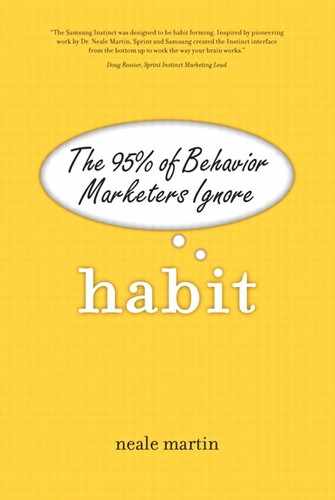Use
In addition to getting customers to automate the purchase process, companies need to develop usage habits. In a B2B marketing example, habit formation revolves around the relationship. It is critical that a company be easy to work with, be easy to order from, and not create surprises. The person in purchasing is more likely to buy from the supplier that has an intuitive web site and one-click checkout than the competitor that has better prices but is hard to order from. Although FedEx advertises reliability, the convenience of its envelopes in the office makes FedEx use automatic. Convenience is integral to habit formation.
Travelers booking their own airline flights or hotel reservations have multiple online options. Airlines want customers to use their web sites to book flights, so they charge more for reservations made using a representative. However, the online marketplace is highly competitive with integrated travel sites such as Travelocity, Orbitz, or Expedia that search for flights across airlines and combine hotels and car rentals (services the airlines also offer).
Novice users might start at any of these sites based on advertising, web search, or reputation. As soon as they land on the home page, they begin learning the site’s layout as they would in navigating a retail outlet. If the site is visually appealing, is intuitively designed, and provides good feedback, the user might not go anywhere else. But if the experience creates any level of frustration, habit formation will be inhibited.
In their pioneering work on automatic use, my colleagues Naresh Malhotra, Ph.D., from Georgia Tech, and Sung Kim, Ph.D., from the University of Wisconsin, Madison, have investigated the process of unconscious use with web sites and information systems.[2] Their research demonstrates that users go from intentional to unconscious, automatic use with multiple trips to a web site. The more experienced the user is, the less intention is involved in going to and using a particular web site.
[2] With Sridhar Narasimhan, Ph.D., also from Georgia Tech.
Building a web site that users visit repeatedly requires both an intuitive design and consistent reinforcement. Many web sites that are visually appealing fail to engage the customer on a behavioral level. Rich media, including video, can become a problem if it loads slowly or requires the user to download a player. Additionally, privacy and security concerns can prevent habitual use. Instead of putting security and privacy information on the home page, it is more effective to include assurances at the point where the user is required to enter personal information.
We can also extend the importance of habitual use to anyone in the buying center, including the purchaser, decider, and user. Bloomberg did a great job of selling terminals to brokerage houses by focusing on the end user, stockbrokers, while the competition was selling to the IT department. Cereal manufacturers create different messages for children (great taste with lots of crunch) than for the moms who typically make the purchase (less sugar, more vitamins).
Wireless carriers sell handsets with amazing capabilities, and broadband wireless networks can now deliver video, music, and a host of other data applications. But consumers don’t use most of these applications. According to research from a major wireless carrier, customers who don’t discover and use an application within the first 72 hours of getting the phone will probably never use it. The tricky part is that if the carriers try to get customers to use too many applications, the resulting complexity inhibits habit formation.
